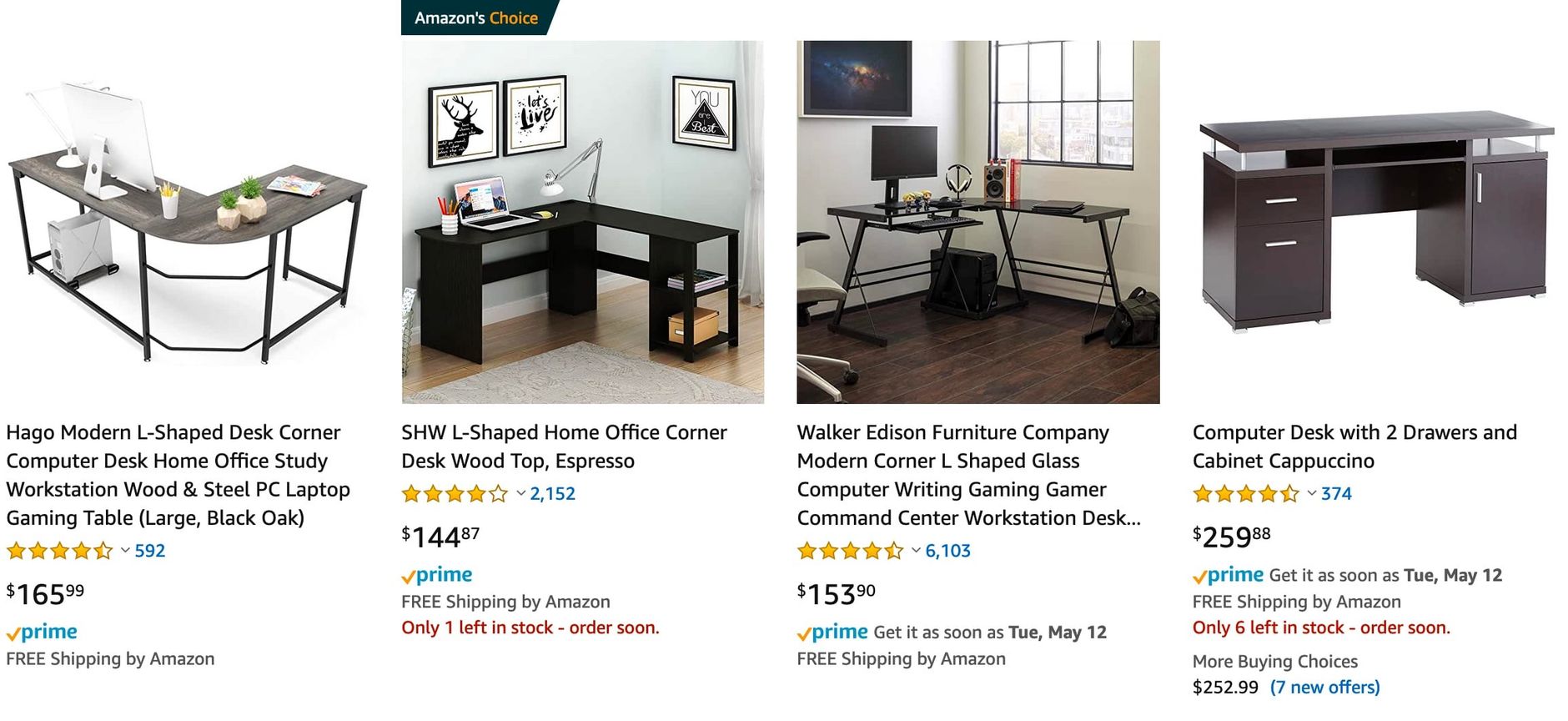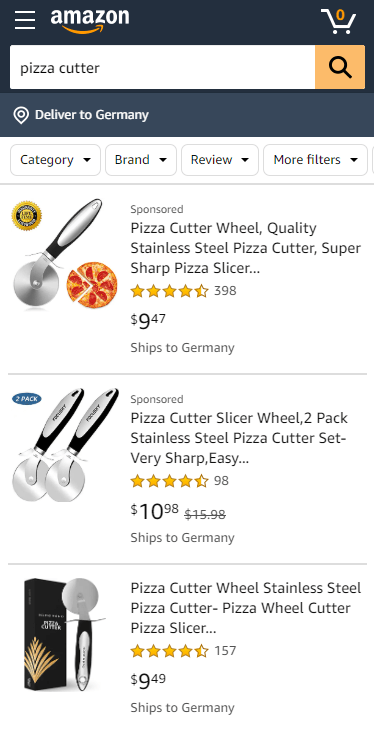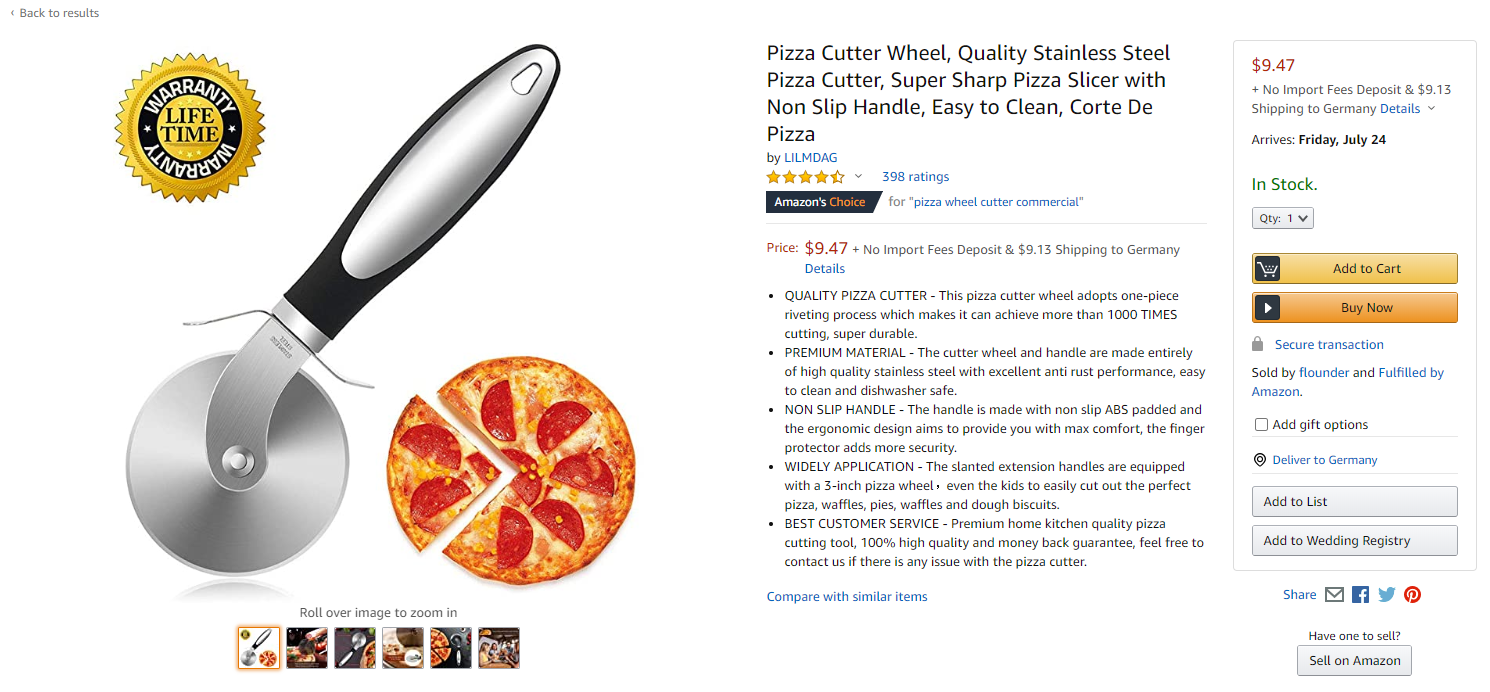- What is Amazon SEO?
- Amazon SEO Basics: How does the Amazon Algorithm work?
- Amazon SEO Optimization
- Conclusion
In this article we would like to explain to you exactly what "Amazon SEO" is, how you as a seller or vendor can use Amazon SEO for yourself and increase your visibility and therefore your sales. We will explain how Amazon's search tool works and how you can use that knowledge to optimize your products accordingly in order to improve your chances of being found. At the end we will also introduce you to some tools that will help you implement Amazon SEO for many products.
What is Amazon SEO?
If you want to market a product on Amazon, you have to make sure that your product can be found by potential customers. Often different people with different terms search for one and the same product. It is therefore essential to find out what search terms are involved so that these terms and combinations of them can then be integrated into the product title, highlights, product description or search term fields.
This procedure is usually referred to as Amazon SEO, where SEO stands for Search Engine Optimization. Usually the term SEO is used by website operators when they try to increase their visibility on Google. In the meantime, however, it is increasingly being adopted by Amazon sellers and transferred to the Amazon marketplace.
Amazon SEO is part of the marketplace optimization. In the context of marketplace optimization, one often speaks of the so-called "onpage optimization" and the "offpage optimization". Both terms originate from the classic area of Google SEO.
Amazon SEO usually refers to the onpage optimization of an item. The aim here is to optimize the directly influenceable factors of a listing in such a way that the item can be found using all relevant keywords.
The offpage optimization on Amazon is about e.g. the structure and maintenance of reviews or customer questions. It is not about the item itself.
Before we go deeper into the topic, we will explain how Amazon's search works. Understanding this is important in order to grasp the bigger picture.
Amazon SEO Basics: How does the Amazon Algorithm work?
The Amazon Algorithm A9 is at the heart of the product search engine. Its task is to know and make all products listed on Amazon searchable.

When a customer enters a search query in the search slot, the algorithm checks the customer's search query word by word and compares it with the existing product listings. Only if terms contained in the search query also appear in the respective product listing the product becomes relevant for the algorithm. Filler words such as "and" are ignored in the product search, as are upper and lower case letters. The algorithm also tries to understand singular and plural.
Once the algorithm has filtered out the relevant products, they get sorted. Amazon sorts in descending order of purchase probability: products with a high probability of being purchased are at the top, products with a lower probability are further down. Amazon uses historical data for this. After all, Amazon knows what customers have searched for in the past and have then purchased.
Amazon therefore differentiates between the relevance of a product and its performance. Let us take a closer look at these two concepts.
Amazon Relevance Factors
The relevance factors show how well a certain product matches the content of the customer's product search. Amazon compares the search query with the texts available in the listing. This is advantageous for you as a seller, since you can directly influence the search terms and thus directly influence the relevance of an item.
Amazon evaluates in particular the information in the following areas:
- Product title
- Product attributes (also called "bullet points")
- Stored search terms (also called "Hidden Keywords")
- Product description
Furthermore, Amazon weights the contents of these areas differently. As we know from monitored experiments, the title as well as the keywords are of particular importance. Therefore it makes a significant difference in which fields you place which keywords.
In addition, you should take into account to what extent search queries consisting of several words and product keywords match. Ideally, the search terms should all appear in the same order in one information field. If, however, the individual terms are divided up among different information fields, this product is less relevant than a product where these terms are closely related.
Amazon Performance Factors
For Amazon, it makes sense to present products that have been successful in the past and thus have delivered "a good performance" at the top of the search results. The performance of a product can be measured easily using the following three key indicators:
- Click-through Rate (CTR)
- Conversion Rate (CR)
- Sales
The following applies:
Impressions x CTR x CR = Sales
Click-through Rate
The click-through rate measures the frequency with which a product is clicked on by users in the search results. The click rate of a product varies depending on the keyword and ranking. A wallet will inevitably have a significantly higher click rate for the keyword "wallet" than for the keyword "rucksack". In the same way, the product on position 1 of the search results will have a higher click rate than the product on position 9. Accordingly, the Amazon algorithm always determines and compares the click rate specifically for the keyword and ranking.
Let's have a look at a typical search result:

A look at the search results for the search term "table" shows which elements potentially influence the click-through rate of a product:
- Product image
- Title
- Price (and strike price if applicable)
- Number of reviews and ratings
- Availability (free shipping, Prime)
- Bestseller or Amazon-Choice Badge
- Discount information
Amazon SEO starts right here, because without the click in the search results, no sale will take place. You cannot influence all elements directly. The number and amount of ratings as well as the presence of an Amazon Choice or bestseller badge can only be influenced indirectly and are usually the result of many sales.
However, you can influence the picture, the title and the price.
You should not only look at the search results on the desktop, but you should also look at the search results displayed on the smartphone. The majority of purchases are made here:

The same elements are also displayed on mobile, except the title is much shorter. You must take this into account when formulating the title. But more on that later.
Conversion Rate
The Conversion Rate measures how many customers have actually bought the product after visiting the product description page. Products with a high conversion rate meet the customers' expectations. This is usually rewarded with a higher ranking by the Amazon algorithm.
In contrast, it is a bad sign if a product is never bought after customers have visited the product page. This means that users have received information on the product page that has discouraged them from making a purchase or that there was too little information to make a decision for the product in question. This could be, for example, an insufficient product description or negative reviews.
In order to positively influence the conversion rate of a product, you must ultimately optimize all elements of the product detail page. This goes beyond pure text elements. Especially important are the elements that are "above-the-fold", i.e. at the top of the page.

Amazon shoppers usually just glance at a page to decide whether to pay more attention to a product or return to their search results.
Sales
Sales is one of the strongest user signals available to Amazon for evaluating a product. Turnovers reflect the sum of all decisions that customers have made about a product.
A product with a comparatively higher sales volume seems - assuming the same price - to meet the needs of the customers better than a similarly expensive product with lower sales volume. Sales are therefore never absolute, but always relative to the competition.
It can be assumed that Amazon places the user signal "sales" in relation to the preceding search query. It is therefore possible that a product with a very specific customer benefit (e.g. oversized shoes) only represents a small turnover in absolute terms compared to the competition. However, if the search query contains the term "oversize", this product will generate above-average sales.
For Amazon, sales represent an important indicator for business management reasons. After all, Amazon is earning with every sale. But in the end, the purchase only comes about if the customer's needs are met. Amazon and the customer therefore have the same interests.
What is the Connection between Relevance Factors and Performance Factors?
Together, the relevance and performance factors described determine the Amazon ranking of a product. It is important to understand that the two factors do not influence the ranking independently of each other, but are in a mutual interaction.
Sometimes the factors have the same effect. For example, well-chosen and well-placed keywords not only increase the relevance of a product, they also increase the click rate at the same time, since users usually click more often on products that contain their entered search terms in the title.
However, the factors sometimes also have an opposite effect. With regard to the keywords, it would make sense to place as many terms as possible in the title or the bullet points. In terms of good performance, however, this makes little sense, as a long, complicated title is unattractive to users and therefore generates fewer clicks.
Therefore, the interaction of relevance and performance factors should not be ignored and a good balance of both factors should be the goal of Amazon SEO.
Amazon SEO Optimization
First of all, it is important that you get to know and define your target group. Only by knowing what makes your target group tick and how they search for a product can you effectively find the relevant keywords that your customers use to search for a product. On the other hand, with the right keywords, your Amazon ranking optimization and your overall success stands or falls.
Let's assume you want to sell a wallet. Then you should first do a Amazon Keyword Research to understand what potential customers are looking for when they want to buy a new wallet, for example. Because even with such an everyday object there are countless variations of possible search terms:
- Wallet
- Money purse
- Purse
- Pouch
- …
In addition, you can also orientate yourself to the competition: Which terms are used by the products in the first five positions of the search results?
Since different users have individual vocabulary, you should also look at related search terms, misspellings and synonyms.
Note
Make sure to checkout our article on analyzing Amazon Brand Analytics search term reports.
After finding your keywords, it's time to add them to your product listing. But it's not enough to simply use the right keywords – you must also follow Amazon's guidelines, strike the right tone, and present your product in an appealing way.
To help you succeed, we've created a dedicated article that explains the following areas in detail:
You can find the complete guide for optimizing your product listing here.
Conclusion
Studies show that most buyers will click through to the second search results page at most. All products that do not appear on the first two pages of the search results page generate significantly fewer sales.
If you are involved in selling products on Amazon, there is no way around Amazon SEO. Only with an optimized product page will you have a real chance to get to the top of the Amazon ranking in the organic search and ultimately generate more sales.
Amazon SEO helps you optimize your product pages so that they can be found more easily and quickly by customers. The sooner you understand the various factors of the Amazon ranking algorithm and the relevant connections, the better you can develop your own ideas and strategies for optimizing your product listings.
But be careful: Do not rest on your achievements. Continue to follow the current developments in search engine optimization on Amazon. Due to changes in guidelines or direct changes in algorithms, ranking positions can change quickly. Do it just like Amazon: Keep the needs of your target group in mind and let the most urgent wishes of your customers influence your products and product listings.
Free trial
Just register for a 14-day free trial and we will show you how our Amazon Seller Tool and Amazon Vendor Tool can help you monitor your marketing activities on a daily basis. Start your free trial now





